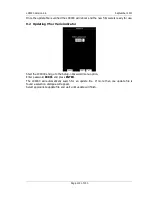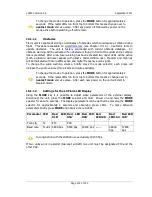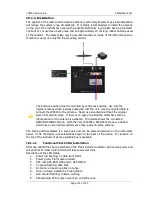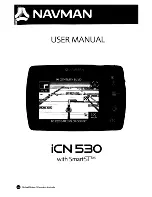
LX9000 Version 2.6
September 2011
Page 100 of 130
Usually a task sheet with observation zone definitions matching the LX9000 observation zone
definition will be given. An example of a task sheet is shown on the previous page.
However when an assigned area is defined only with two radials and two radii some
calculation must be accomplished.
Let us assume an assigned area defined as:
Radial1=30°, Radial2=70°, Min.radius=50 km and Max.radius=200 km
To convert this description the following calculation must be performed:
•
Direction set to FIXED.
•
Angle12= (Radial2-Radial1)/2+180°=230°. Attention should be paid with northerly
directions.
•
Angle1= (Radial2- Radial1)/2=20°.
•
Radius1=Max.radius=200 km.
•
Radius2=Min.radius=50 km.
7.2
Flying a Task
After takeoff the unit will switch to flying mode. The pilot will notice this because the
statistics page will change from logbook view to flight statistics.
7.2.1
Starting a Task
Before starting a task (in task mode) a character “
S
” will be displayed on the final glide
symbol. This indicates that the task has not yet been started. The lower number tells you
at what altitude you will start. For more advanced start options such as maximum start
speed, maximum altitude and before start altitude see chapter 5.7.4. Once you decide to
start the task and glider enters start observation zone, the message
“Inside start zone”
will
be displayed.
You may now leave the start observation zone and fly towards the first turn point.
When leaving the start observation zone the message
“Task started”
will be shown.
Содержание LX9000
Страница 2: ......
Страница 99: ...LX9000 Version 2 6 September 2011 Page 99 of 130 ...
Страница 130: ...LX9000 Version 2 6 September 2011 Page 130 of 130 ...














































